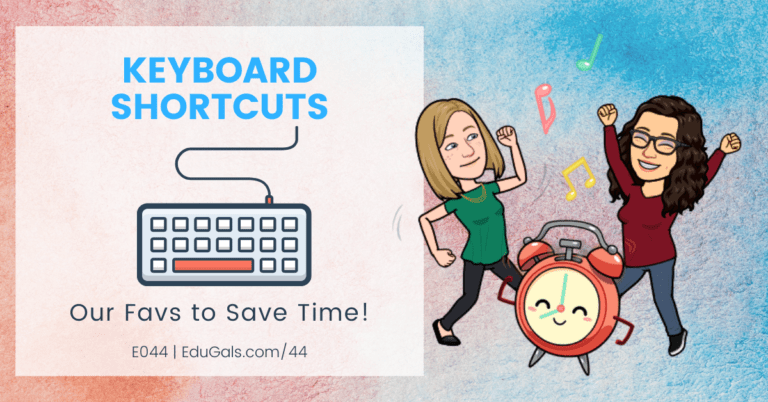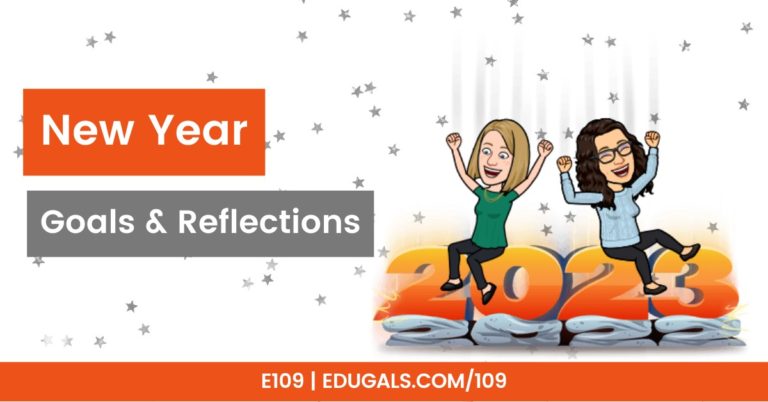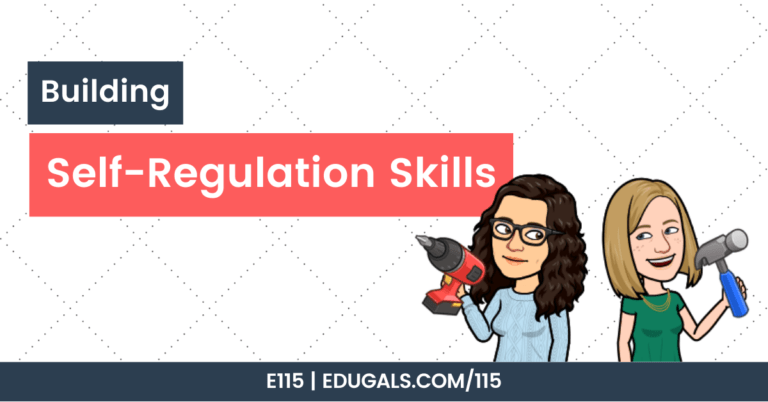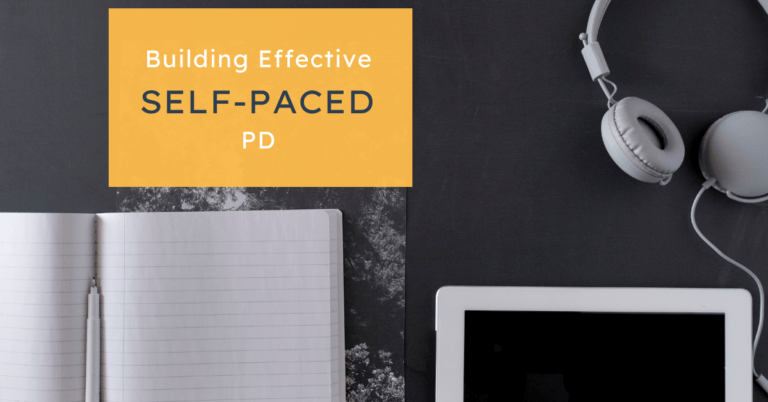In this episode, we are going to explore the idea of how to deal with negativity in education. We will talk about some of the sources of this negativity, as well as some ideas about how you can deal with this in the workplace.
If you like what you hear, then share this episode with a colleague or friend, and make sure you subscribe so that you don’t miss out on any new content! If you are able, consider supporting the show by buying us a coffee!
We would love to hear from you – leave a comment here, OR check out our FLIPGRID!
Show Notes
This week, we are deviating a bit from the norm, and want to talk a little bit about the negativity that much of us are dealing with in the world of education right now. There are so many different things going on right now, so it has been a bit of a struggle. Between covid protocols, keeping family and students, safe, and our jobs in the classroom, it has been a tough start up.
We wanted to take some time to talk about it, and to let other educators know that you aren’t alone. We will also share what we are doing with that negativity.
Part of the struggle this year is that it has been much harder to begin the school year because of all the stress and burn out from last year. This, in addition to the negativity we are experiencing around us as educators, has really compounded things.
We will approach this by talking about some of the issues and sources of negativity right now: staff Relationships, Admin pressures, policy changes, government, students and parents, social media, toxic positivity
Staff Relationships
Right now in schools, there is a whole spectrum of staff emotions. Some are dealing incredibly well, whereas others are extremely stress and worried. Covid has taken a toll on many educators and their families, and each one of us have a different level of comfort with respect to extracurriculars, face-to-face interactions, etc.
This by itself is not an issue! It’s important that we give each other space and get involved based on where we are at – someone that is immunocompromised, or has a family member that is, is going to be far more cautious and worried than someone who isn’t as afraid of covid.
The tension comes when teachers begin to take on the extracurriculars, and start to feel pressured to take on more than they can handle. We are already teaching long classes in our modified semester model, which requires more prep. And if you are teaching your double week, you feel even more stressed because there is less time to get ready for your classes.
There’s also the factor of where each person is with regards to their career. A newer teacher that is teaching courses for the first time is likely going to be more stressed out than someone that has taught and developed resources for their courses in the past.
How each teacher feels about covid also determines the strategies and activities that they use in their classroom, which could put pressure on course teams to do the same. The covid protocols are qualified by “as best as possible” which makes everything quite murky, and when it’s impossible to distance large classes of teens (over 30 in many classes), it all becomes quite complicated when trying to figure out group work, presentations, etc. in the classroom.
Workrooms are also a tough situation. Everyone has a different level of comfort with covid and covid protocols, so it can make for a difficult balance.
As individual teachers become more stressed, interactions among staff tend to become more short or tense, and it could lead to more negative emotions in the workplace.
How do we deal with it?
Be honest! Share your comfort levels with others so that there’s a little more transparency. It’s important that we are up front with one another.
Give each other space! If you are a colleague, a leader, or a course team lead, it’s important to give one another space. This isn’t going to be a year of big changes – we are all adjusting to a new school day, with covid cases higher than they were last year, and protocols seemingly lacking compared to last year. This isn’t going to be the year to push people too hard to change or adapt. We are already doing those things, and are struggling to make it work. Go slow, and take it easy on one another.
Create a fun or light-hearted activity each week! It’s a nice way to get people to smile, to relax, and to build a sense of community within your departments.
Admin Pressures
This year is a tough year for pressures on everyone. There are a lot of activities, sports, clubs and staff committees. It’s admin’s job to encourage staff to get involved in the school community.
This year is a difficult year, though. It’s important that if we don’t have the capacity to take on more, that we have that conversation, and feel comfortable saying no. You are not effective if you are spread too thin. So take on what you are able to take on, but get comfortable saying ‘no’ when you need to. Amanda Hargreaves has a great tweet about how to get better at the art of saying no.
As teachers, we often don’t consider that admin also have a lot of pressure on them. Just because they are running the school doesn’t mean that they don’t have people in Board positions above them putting pressure on them to get things done.
To top it off, they also have parents and students, the school community, and even staff placing a lot of pressure on them. They are not superhumans without boundaries or limits – much like every single other person in the building, there is only so much that they can do.
We need to treat one another as human beings, and keep in mind that every single one of us is walking around with our own set of worries, stress, etc.
Government & Society Pressures
This topic is a difficult yet necessary area that needs to be addressed. The current provincial government is definitely not a fan of public education. What they have put out for the public to read and react has made teachers and education workers seem like the enemy. Government certainly has a big job, but we wish they could see the important of public education and the roles of educators in Ontario.
There are a number of educators on Twitter that have done a great job of shining a spotlight on what has been going on in public education. And this is a great suggestion for more educators – share what is happening on the ground! Share the good things, as well as the bad so that the general public has a more accurate picture of what is actually happening.
We are grateful that our Board is not doing the fractured, hybrid model of teaching that has some students at home and some in the classroom. That being said, there are so many educators in Ontario Ed that are struggling with the balance of this type of teaching. Add in wifi issues for students and/or teachers, and trying to balance pacing for both groups of students.
One possible solution for hybrid is the Modern Classrooms Project – instructional videos, self-pacing, meeting in small groups, etc. While it is a great solution, not everyone has the time or capacity for PD right now.
Now add in the pressure for extracurriculars, and it’s a super stressful situation. People are balancing family needs, covid concerns, workload struggles, and everything else that is causing stress right now.
Another possible hybrid solution: reach out to any and all colleagues that you know that teach or have taught the same courses. Now is the time to collaborate and share resources! The fear of criticism is definitely real, but now is the time to embrace the work we have done, and consider sharing what you have. The more you share, the easier feedback gets – and sometimes the feedback adds so much to what you have. It is honestly worth the risk.
Students & Parents
The new TikTok challenges are really making this new school year a unique challenge. Students have been vandalizing bathrooms and/or stealing things from staff or classrooms.
This has created a culture of mistrust between staff and students.
Virtual vs in-person
Parents and custodians had to make a decision for their students back in June as to whether they would attend in-person or virtually for this first semester of the school year. In June, cases were not nearly as high as they are now. The new issue is that parents now want their students to be able to learn from home, but from their in-person teacher since virtual schools are not accepting students anymore.
This has created a big pressure point for teachers because formally there is no hybrid teaching. It is hard to plan when students aren’t consistently attending, and there is mixed messaging about what is supposed to be happening when students refuse to attend school.
If cases increase, then this issue will only get worse.
Modern classroom is once again a frontrunner solution to address this issue. If you don’t have the time or capacity to record your own videos, then use resources that are ready-made. There are an amazing number of resources available on YouTube that you can easily and quickly link to the end of a slide deck.
If you can record your own lesson, then do it – it makes a difference to students when they hear you. It is more personal, and will include vocabulary and phrases
Social Media
Our biggest advice: LOG OUT!
There is so much negativity right now on social media, whether it be news, tweets, negative posts, etc. It is also highly politicized right now with anti-vax messages, etc. that have divided society and families.
If you’re on Twitter, find your people! Find people that you engage with, that aren’t making you angry, that you can relate to, and that stretch your thinking. Create a list of those people, and instead of looking at your homepage, just look at your list. That will filter out a lot of negativity.
It’s still very healthy to vent and to get these feelings out, so find your outlet and share your perspective and experiences.
Toxic Positivity
This one is tough. As much as we want to stay positive when things are tough, sometimes that positivity goes too far. Sometimes we need time to process our frustrations, and to voice or vent those difficulties. Toxic positivity does not fix or address the causes of educator frustrations,
A current example of toxic positivity in the media is the whole idea of how educators should keep a “Gratitude Journal” to help them with the difficulties of covid. It was spread around social media like wildfire. It’s hard to figure out exactly where it came from because it blew up so quickly and has gone crazy! Check out the search on Twitter for the Gratitude Journal. Here is a link to a Toronto Star article with respect to the Gratitude Journal well.
Our advice: Surround yourself with realistic people – not with people who think that being happy and positive about everything, all the time, is the way to live. Instead, find people who see the importance in embracing a whole range of emotions, from negative to positive, and give yourself a chance to experience and work through it all. There is value in balance.





